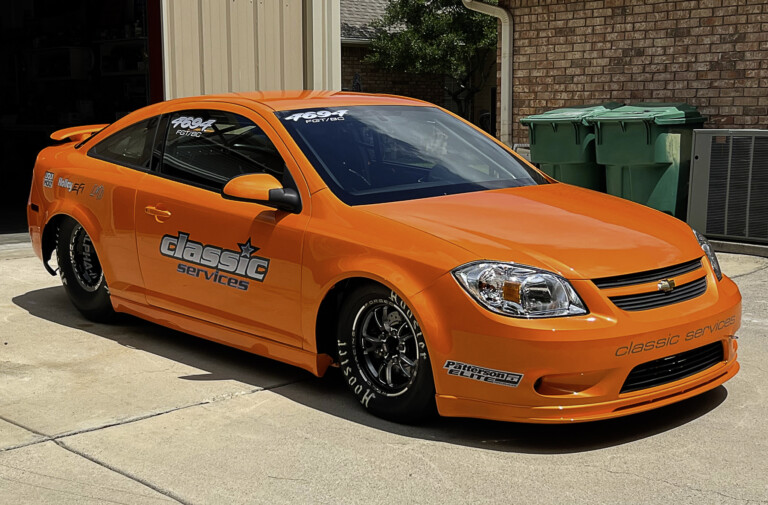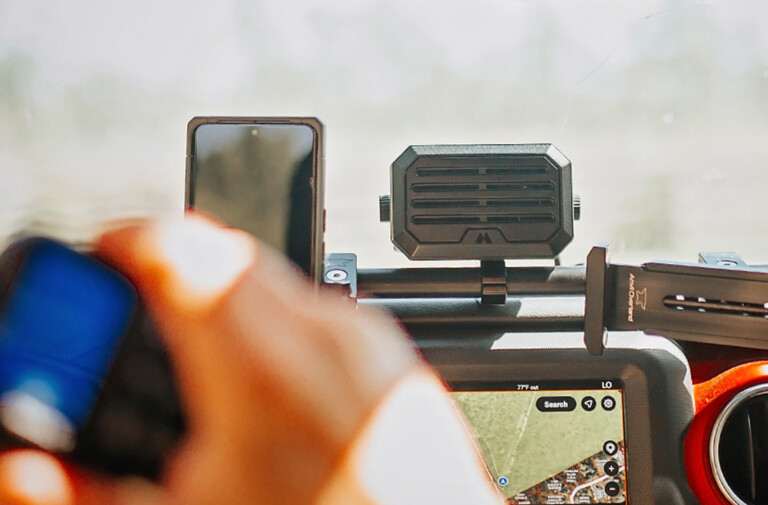Over the past five decades, Team Penske has been chosen to absorb the shock impulses experienced by some of the most iconic racecar chassis’ in the history of professional motorsports. In that 50 year span, Penske’s suspension designs have helped numerous race teams from Nascar, IndyCar, Formula 1, Can-Am, Trans-Am and Australian V8 Supercars shatter records, take podium finish after podium finish, and even win overall series championships.
Team Penske felt that the company’s 50th anniversary was an appropriate excuse to get away with borrowing some of the most iconic racecars in Penske’s history from the Indianapolis Motor Speedway Museum and put them on display at the 2016 Performance Racing Industry trade show in Indianapolis, Indiana; and we just couldn’t help but see what they had on display.
Rick Mears’ Gould Charge Penske PC6 – 1979 Indianapolis 500 Winner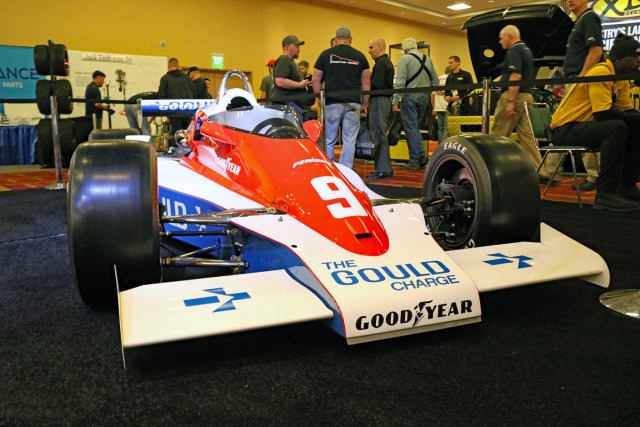
The oldest car on display was the Penske chassis Gould Charge PC6, which driver Rick Mears piloted to a 1979 Indianapolis 500 win. Mears won from the pole, but not after first spending the majority of the race battling Al and Bobby Unser until both had mechanical issues and Mears was able to take advantage.
The Gould Charge PC6 was powered by the infamous 2.65-liter turbocharged Cosworth DFX platform, the same engine to also propel Al Unser’s Chaparral Lola to an Indy 500 win the year before and the subsequent eight years to follow Mears win. The DFX would later be recognized as the engine that officially put an end to the nearly continuous 30 year reign of the Offenhauser platform.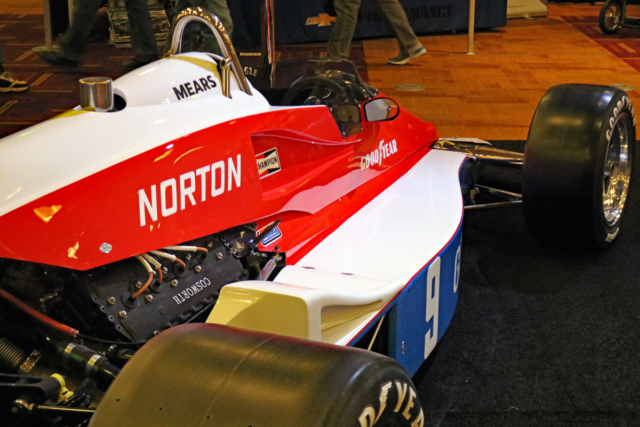 Bobby Unser’s Norton Spirit Penske PC9B – 1981 Indianapolis 500 Winner
Bobby Unser’s Norton Spirit Penske PC9B – 1981 Indianapolis 500 Winner
Bobby Unser’s Indianapolis 500 win in the Cosworth DFX powered Penske PC9B was one of the most controversial in the series’ history. Tony Bettenhausen suffered a flat tire that spun him into the wall on lap 146, three laps later, leader Mario Andretti and second place Bobby Unser both visited the pits. Unser was first to leave the pits with Andretti following a few seconds behind.
While entering the track with the yellow flag still out, the pace car was leading the group through turn one and two. Unser chose to stay below the painted white line on the inside and passed 14 cars before dropping into the group at the end of turn two and Andretti passed two cars before he blended into the field. Unser took position immediately behind the pace car as the leader, a move that went largely unnoticed at the time. Unser eventually won the race and led for a race high total of 89 laps.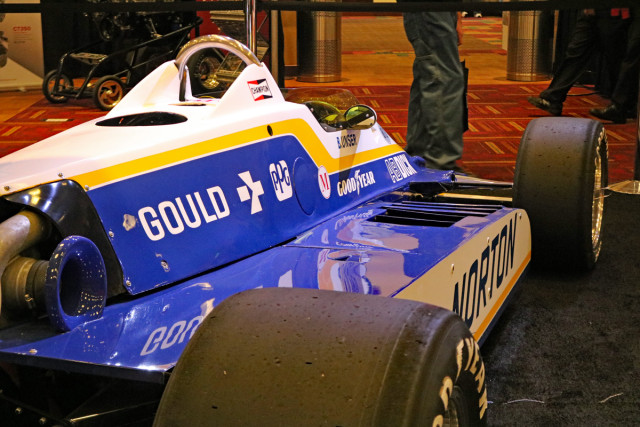
During the post-race press conference, Andretti was unhappy with what he witnessed under the yellow flag and announced that he was protesting the results. After spending the whole night reviewing race tapes the USAC penalized Unser by dropping him one position, giving Andretti the win but with an empty prize envelope and no keys to the pace car.
In October of 1981, after nearly five months of appeals hearings and bickering over the loose wording of the “blend rules,” the USAC overturned their decision and instead gave Unser the win, but not before first fining him $40,000.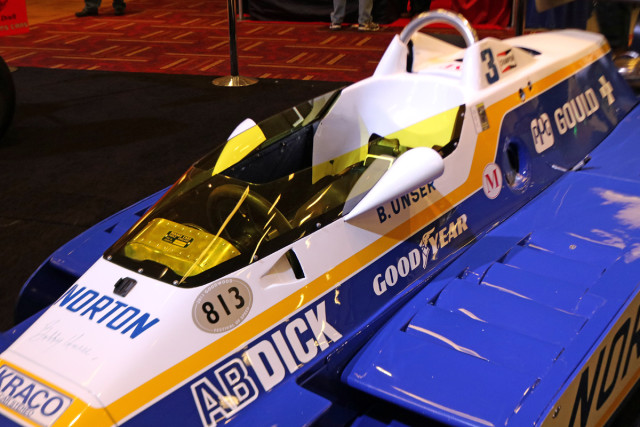 Al Unser Jr’s Marlboro Penske PC23 – 1994 Indianapolis 500 Winner
Al Unser Jr’s Marlboro Penske PC23 – 1994 Indianapolis 500 Winner
Unser’s Team Penske teammate Emerson Fittipaldi was well on his way to his second consecutive Indy 500 win in 1994. But with only 15 laps left, Fittipaldi allowed the left tires of his car to stray onto the rumble strip, causing the car to lose control and slide into the wall at turn four. Unser was a full lap behind at the time, but was still able to take the lead and win.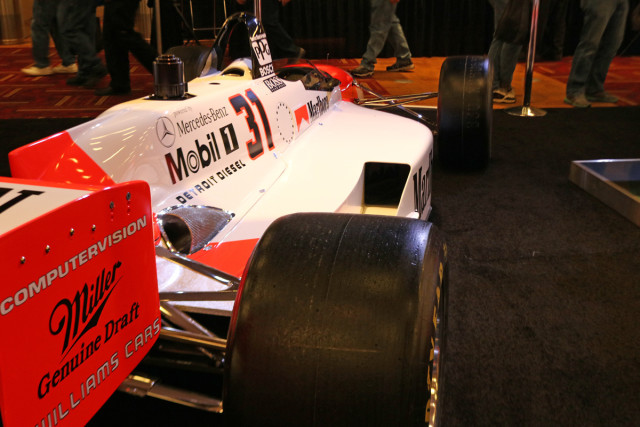
The Penske PC23 was propelled by the revered Mercedes-Benz 500 I 265E pushrod engine, a 3.43-liter methanol powered monster producing 1,024 horsepower at 9,800 rpm and had a dry weight of just 273.4 pounds. The 265E engine was designed under secrecy, being unveiled only days before the race, and was the first engine in history to win the pole and the Indy 500 in its debut race.
CART sanctioned the entire IndyCar season, with the exception of the Indianapolis 500, which was overseen by USAC under slightly different rules. Mercedes designed the pushrod engine to specifically take advantage of a loophole in the USAC rulebook that did not require the use of any production parts on the engine and allowed for increased displacement (3.43-liters vs 2.65-liters) and an additional 5 psi of boost, giving the PC23 a 150 to 200 horsepower advantage.





